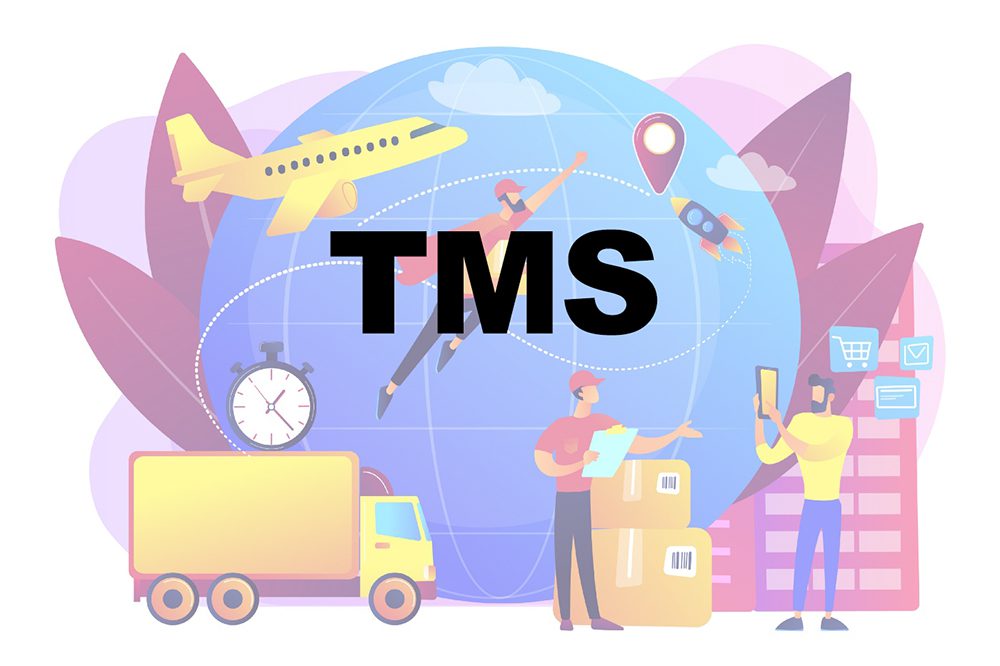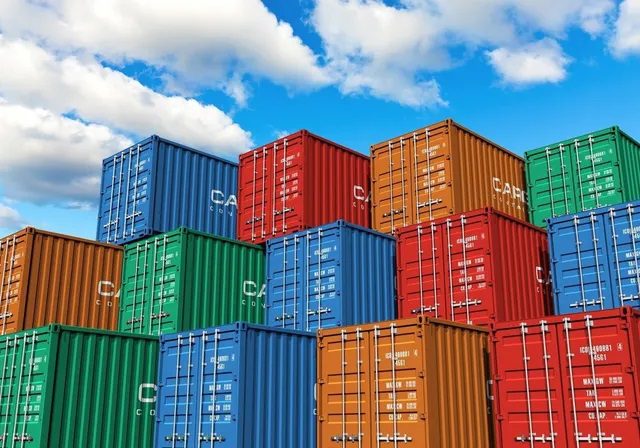BLOG
Mastering Shipping Logistics: Essential Strategies & Best Practices
- wanmeili
- 2025-02-24
Introduction
Have you ever ordered something online and eagerly awaited its arrival? The moment that package arrives on your doorstep can feel like a small celebration. But have you ever stopped to think about what goes on behind the scenes to make that delivery possible? This is where shipping logistics comes into play, and it’s more important than you might realize for businesses today.
Where people expect faster deliveries and easy access to products from around the globe, businesses need to be on top of their shipping game. If a company can deliver its products on time and in good condition, it builds trust with its customers. On the flip side, delays or lost items can lead to unhappy customers and damage a business’s reputation.
Beyond keeping customers satisfied, effective shipping logistics can also help enterprises save money. By carefully managing how they transport and store goods, companies can lower their costs and run more efficiently. This is especially important for small businesses that are trying to compete with larger players in the market. So it is crucial to master shipping logistics strategies to gain competitive edge.
In this article we will explore the components of shipping logistics and offers ways to enhance your shipping strategy for your business.
Understanding Shipping Logistics
Shipping logistics is all about how products move from one place to another. It involves everything from planning the best routes and choosing the right delivery methods to keeping track of where items are at any given time. For companies, good shipping logistics is crucial. It ensures that items get to customers quickly and reliably, keeping them happy and coming back for more.
Shipping vs. Logistics: What’s the Difference?
Shipping and logistics are often used interchangeably, but they refer to different concepts within the supply chain.
Shipping refers specifically to the process of transporting goods from one location to another, typically from a seller to a buyer or between locations within a supply chain. It involves tasks like packaging, labeling, and arranging for carriers (trucks, ships, airplanes, etc.) to transport the goods such as sending a package through a courier service, freight shipping, or delivering goods via shipping containers.
Logistics is a broader term that encompasses the planning, implementation, and coordination of the movement of goods, services, and information throughout the supply chain like supply chain management, warehouse operations, demand forecasting, and reverse logistics (managing returns)
Pillars of Shipping Logistics
Inbound Logistics
Inbound logistics is the management of the flow of goods and materials into a company, encompassing supplier relationships, transportation, receiving, and inventory control to ensure timely and efficient availability of resources for production or sale.
Outbound Logistics
Outbound logistics refers to the processes involved in the storage and distribution of finished goods to customers, including order fulfillment, transportation, and inventory management, to ensure timely delivery and customer satisfaction.
Reverse Logistics
Reverse logistics is a vital yet often overlooked aspect of supply chain management. It encompasses the processes related to the movement of goods from their final destination back to the point of origin for returns, repair, refurbishment, recycling, or proper disposal. In today’s increasingly sustainability-conscious market, effective reverse logistics can significantly enhance operational efficiency, reduce waste, and improve customer satisfaction.
With e-commerce booming and consumer expectations evolving, businesses must implement robust return policies and efficient handling systems to manage returns effectively. Not only does this facilitate hassle-free experiences for customers, but it also allows companies to reclaim value from returned products, reduce inventory costs, and minimize their environmental footprint.
Common Challenges in Shipping Logistics
Shipping logistics encounters several common challenges, including rising fuel costs that directly affect transportation expenses, fluctuating demand that complicates inventory management, and regulatory compliance issues that vary by region and can lead to costly delays. Additionally, port congestion often results in increased turnaround times, while inadequate tracking technologies can hinder visibility and communication across the supply chain. Furthermore, labor shortages, particularly in warehousing and driver roles, have intensified competition for talent and operational efficiency. Finally, environmental concerns and the push for sustainable practices are reshaping logistics strategies, presenting both a challenge and an opportunity for innovation. So it is important to ensure that businesses can navigate the complexities of global trade effectively.
How to Optimize Your Shipping Logistics Strategy
Optimizing your shipping logistics strategy involves a multi-faceted approach that focuses on efficiency, cost reduction, and improved customer satisfaction. Here are several key steps to consider:
Leverage Technology: Implement advanced logistics software and tracking systems to enhance operational visibility and optimize routing. Utilize data analytics for forecasting demand and streamlining inventory management.
Partner with Reliable Carriers: Build strong relationships with transportation carriers and explore multiple shipping options to find the best balance between cost and service levels.
Consolidate Shipments: Combine smaller shipments into larger loads where feasible, which can reduce shipping costs and minimize the carbon footprint.
Streamline Warehouse Operations: Optimize warehouse layout and inventory placement to enhance picking efficiency. Employ automation where appropriate to speed up processes.
Implement a Just-in-Time (JIT) Strategy: Minimize excess inventory by adopting a JIT approach, which can lower holding costs and reduce waste.
Enhance Communication: Strengthen communication channels with suppliers, carriers, and customers to ensure transparency and prompt response to any issues.
Focus on Sustainability: Incorporate sustainable practices into your logistics strategy, such as using eco-friendly packaging and optimizing delivery routes to reduce emissions, which can improve brand reputation and customer loyalty.
Regularly Review and Adapt: Continuously monitor performance metrics, customer feedback, and market trends to identify areas for improvement and adapt your logistics strategy accordingly.
By systematically addressing these areas, businesses can create a more efficient and responsive shipping logistics strategy that meets both operational goals and customer expectations.
The Future of Shipping Logistics
The future of shipping logistics is set to be revolutionized by advancements in technology, sustainability, and evolving consumer expectations. Automation and robotics will enhance warehouse efficiency and transportation through autonomous vehicles and drones for last-mile delivery. Artificial intelligence will play a crucial role in predictive analytics and dynamic pricing, while blockchain technology will improve transparency and security in transactions. As e-commerce continues to grow, demand for rapid and flexible logistics solutions will increase, driving companies to establish localized fulfillment centers. Additionally, a focus on sustainable practices and circular supply chains will address environmental concerns. Overall, the integration of these innovations will lead to more efficient, transparent, and environmentally friendly shipping logistics, fundamentally reshaping the industry.
Conclusion
It’s clear that getting shipping logistics right is crucial for any business. By focusing on smart strategies like improving supply chain processes, using technology effectively, and keeping sustainability in mind, companies can really make a difference in their operations. Staying up-to-date with the latest trends is important, too. In the end, mastering logistics not only helps businesses save money and time but also makes sure customers are happy. It’s about finding the best ways to get things where they need to go, and that benefits everyone involved.
cxmm-scm is dedicated to provide shipping logistics solutions to meet customer’s expectations and reduce the shipping cost for 14 years. If you have any freight requirements from China to the regions, please do not hesitate to contact us at jessicakuang@cxmm-scm.com
Frequently Asked Questions
What is shipping logistics?
Shipping logistics refers to the planning, implementation, and management of the movement of goods from one location to another. It encompasses a wide range of activities and processes designed to ensure that products are efficiently transported and delivered to the end customer.
How does shipping logistics impact ecommerce businesses?
Shipping logistics directly influences eCommerce businesses by affecting customer satisfaction, operational costs, market reach, and overall brand reputation, ultimately determining their competitiveness and growth potential.
What are the biggest challenges in shipping logistics?
The biggest challenges in shipping logistics include managing costs, navigating complex regulations, ensuring timely delivery, maintaining inventory accuracy, and dealing with unexpected disruptions such as weather or supply chain issues.
What are common causes of shipping delays, and how can they be prevented?
Common causes of shipping delays include inclement weather, insufficient inventory, customs holdups, transportation issues, and poor route planning, which can be prevented through proactive planning, enhanced communication with logistics partners, real-time tracking, and thorough contingency strategies.
How do I choose the right shipping carrier for my business?
To choose the right shipping carrier for your business, evaluate factors such as delivery speed, cost, service reliability, coverage area, and available shipping options to match your specific needs and customer expectations.



